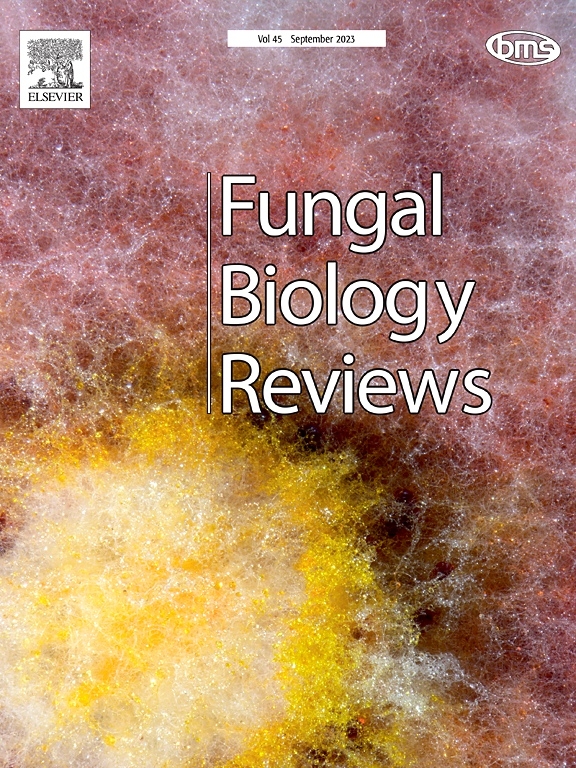从杀菌剂抗性中学习:指导基于rnai的作物真菌病原体控制的进化见解
IF 4.6
2区 生物学
Q1 MYCOLOGY
引用次数: 0
摘要
预防真菌病原体的作物保护对防止作物损失和维持粮食安全至关重要。目前的作物保护严重依赖化学杀菌剂。然而,杀菌剂耐药性的迅速演变,新病原体的不断出现,以及由于对化学农药对人类健康和环境的影响的担忧而禁止化学农药的立法,意味着迫切需要新的作物保护战略。一种优雅的解决方案是基于双链rna的作物保护,其目的是沉默病原体中选定的基因,以减少作物损害。这项技术带来了靶向特定基因的希望,可以选择这些基因来最大限度地发挥保护作用,最大限度地减少脱靶效应,并降低耐药性进化的风险。在这里,我们根据从杀菌剂抗性中获得的经验教训和最近从基因组测序中获得的真菌进化发现,讨论了成功使用这种新技术的策略。本文章由计算机程序翻译,如有差异,请以英文原文为准。
Learning from fungicide resistance: Evolutionary insights to guide RNAi-based control of fungal crop pathogens
Crop protection against fungal pathogens is essential to prevent crop losses and maintain food security. Current crop protection relies heavily on chemical fungicides. However, rapid evolution of fungicide resistance, the constant appearance of new pathogens, and legislation against chemical pesticides due to concerns regarding their impact on human health and the environment, mean new crop protection strategies are urgently required. One elegant solution is double-stranded RNA-based crop protection, which aims to silence selected genes in the pathogen to reduce crop damage. This technology brings the promise of targeting specific genes, which could be chosen to maximise protection, minimize off-target effects and reduce the risk of resistance evolution. Here we discuss strategies for successful use of this novel technology based on lessons learned from fungicide resistance and recent discoveries in fungal evolution derived from genome-sequencing.
求助全文
通过发布文献求助,成功后即可免费获取论文全文。
去求助
来源期刊

Fungal Biology Reviews
MYCOLOGY-
CiteScore
10.60
自引率
0.00%
发文量
36
期刊介绍:
Fungal Biology Reviews is an international reviews journal, owned by the British Mycological Society. Its objective is to provide a forum for high quality review articles within fungal biology. It covers all fields of fungal biology, whether fundamental or applied, including fungal diversity, ecology, evolution, physiology and ecophysiology, biochemistry, genetics and molecular biology, cell biology, interactions (symbiosis, pathogenesis etc), environmental aspects, biotechnology and taxonomy. It considers aspects of all organisms historically or recently recognized as fungi, including lichen-fungi, microsporidia, oomycetes, slime moulds, stramenopiles, and yeasts.
 求助内容:
求助内容: 应助结果提醒方式:
应助结果提醒方式:


